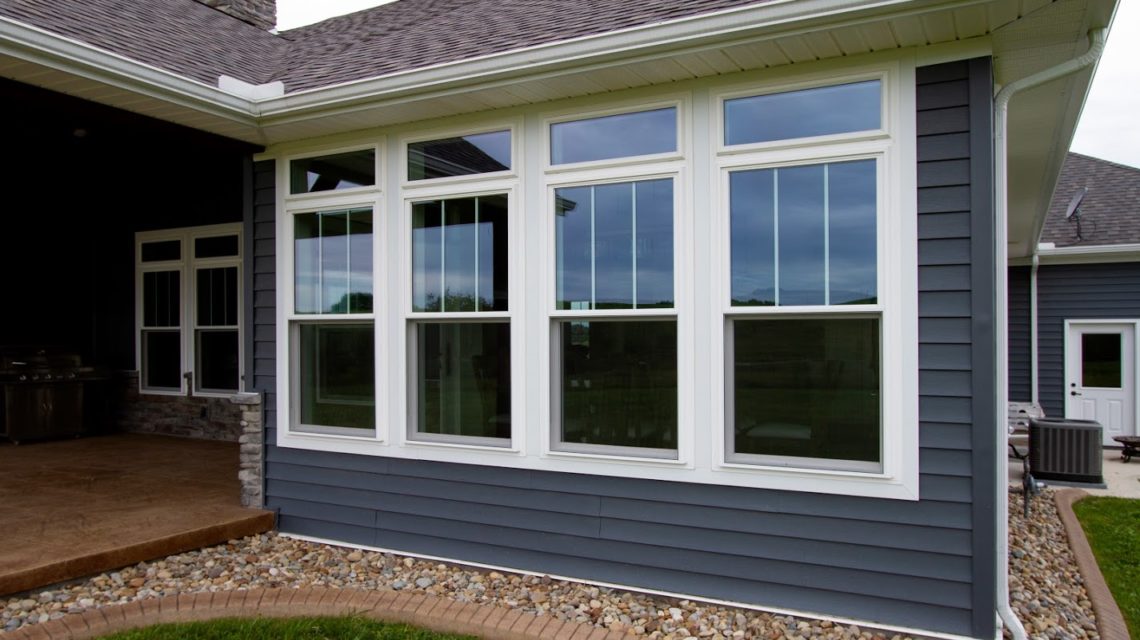If you are in the market for replacement windows, you may have encountered the term “weep holes.” But what exactly are weep holes, and do you need them in your windows? In this article, we will explore the function and design of weep holes, discuss their pros and cons, delve into the factors to consider when buying replacement windows, examine their impact on energy efficiency, and help you make an informed decision.
Understanding Weep Holes in Windows
The Function of Weep Holes
Weep holes are small openings at the bottom of window frames that allow water to drain from the window system. Their primary function is to prevent water buildup and potential damage to the window frame, sash, and surrounding walls. By allowing water to escape, weep holes help maintain the window’s structural integrity.
In addition to preventing water damage, weep holes are crucial in preventing condensation buildup. Condensation can occur when warm air meets a cold surface, such as a window pane. Weep holes allow the excess moisture to escape, reducing the chances of mold and mildew growth.
Moreover, weep holes aid in regulating the temperature inside a building. Allowing air circulation, they help to prevent the buildup of heat and humidity, creating a more comfortable living or working environment.
The Design of Weep Holes
Weep holes are typically designed as small, crescent-shaped openings along the bottom edge of the window frame. These openings are strategically placed to allow water to flow out of the window system while preventing pests and debris from entering.
The size and number of weep holes in a window frame depend on various factors, including the size, the climate of the region, and the type of window material. For example, windows may have larger weep holes in areas with heavy rainfall to accommodate the increased water flow.
Furthermore, the design of weep holes has evolved to improve their functionality. Some modern window systems incorporate a dual weep hole design, including an outer and inner weep hole. This double-layered design provides extra protection against water infiltration and enhances the overall drainage efficiency.
Additionally, manufacturers have developed specialized weep hole covers or screens to prevent further the entry of insects, rodents, and debris. These covers allow water to flow freely while blocking unwanted intruders.
It is important to note that weep holes should never be blocked or sealed, as this can lead to serious issues such as water damage, mold growth and compromised structural integrity. Regular maintenance and inspection of weep holes are essential to ensure proper functioning and prevent potential problems.
The Pros and Cons of Weep Holes
Weep holes are small openings found in windows that serve an important purpose in maintaining the integrity of your home. They have benefits and potential drawbacks that should be considered when deciding whether to install them.
Benefits of Weep Holes in Windows
One of the main advantages of having weep holes in your windows is that they help to prevent water damage. When rainwater or condensation accumulates on the window sill, weep holes allow it to drain out, reducing the risk of mold and rot. This is especially crucial in areas with high humidity or frequent rainfall.
Furthermore, weep holes contribute to improved air circulation within your home. Allowing air to flow in and out of the window frame they help to regulate indoor humidity levels. This can be particularly beneficial in preventing the growth of mold and mildew, which thrive in damp environments.
In addition to preventing water damage and improving air circulation, weep holes can also enhance the overall lifespan of your windows. By reducing the likelihood of moisture buildup, they help maintain the window frame’s structural integrity, preventing costly repairs or replacements in the future.
Potential Drawbacks of Weep Holes
However, weep holes are not without their drawbacks. One of the main concerns is that they may let in drafts and reduce energy efficiency. In colder climates, the influx of cold air through the weep holes can make your home feel less comfortable and increase heating costs.
If you live in an area with extreme weather conditions, such as strong winds or heavy rain, you may want to consider other options or ensure that your weep holes are adequately sealed. While weep holes are designed to drain water out, they may also allow some water to enter during severe weather events, potentially causing water infiltration and damage to your home’s interior.
It is important to note that proper maintenance and regular inspection of weep holes are essential to ensure their effectiveness. Over time, debris or insects may accumulate in the openings, obstructing the drainage and airflow. Regular cleaning and clearing of weep holes can help prevent these issues and ensure optimal functionality.
Ultimately, the decision to have weep holes in your windows should be based on your specific climate, the condition of your home, and your personal preferences. Consulting with a professional window installer or contractor can provide valuable insights and help you make an informed choice.
Factors to Consider When Buying Replacement Windows
Climate and Weather Conditions
Your region’s climate and weather conditions play a crucial role in determining whether or not you need weep holes in your replacement windows. If you live in an area with heavy rainfall or high humidity, weep holes can be beneficial in preventing water damage. On the other hand, weep holes may be unnecessary if you live in a drier climate.
Window Materials and Design
The window materials and design choices can also influence the need for weep holes. Certain window types, such as vinyl or aluminum-clad windows, may already have built-in drainage systems that negate the need for additional weep holes. Additionally, the window design, including the slope and angle of the window sill, can impact how effectively water drains away from the window system.
Maintenance and Cleaning
Consider your willingness and ability to maintain and clean weep holes properly. They can accumulate dirt, debris, and even the occasional insect, requiring regular cleaning to ensure optimal functionality. If proper maintenance is a concern, you may want to explore alternative window options.
Weep Holes and Window Efficiency
Impact on Energy Efficiency
While weep holes may have the potential to decrease energy efficiency, advancements in window technology have addressed this concern. Modern windows with weep holes are designed with weatherstripping and efficient insulation, minimizing heat loss or gain. Choosing energy-efficient replacement windows that meet industry standards and have adequate sealants to mitigate potential energy efficiency issues is essential.
Role in Ventilation and Airflow
Weep holes can contribute to the overall ventilation and airflow in your home. Along with proper placement, they can help maintain a healthy indoor environment by allowing fresh air to circulate and reducing the buildup of moisture, odors, and indoor pollutants.
Making the Decision: Should You Buy Replacement Windows with Weep Holes?
Assessing Your Home’s Needs
Before making a decision, assess your specific home’s needs and requirements. Consider factors such as climate, potential for water damage, and the overall design of your existing window system. Consulting with a professional window company can provide valuable insights into your home’s best course of action.
Consulting with Window Professionals
If you are still unsure whether weep holes are necessary for your replacement windows, it is advisable to consult with window professionals. They can evaluate your situation, discuss alternative options, and guide you toward the most suitable windows for your home.
In conclusion, weep holes in replacement windows can be beneficial in preventing water damage and maintaining a healthy indoor environment. However, they have drawbacks, such as potential energy efficiency concerns. Consider factors such as climate, window materials and design, and maintenance requirements, and seek professional guidance when deciding. By weighing these factors, you can make an informed choice and ensure that your replacement windows meet your needs and preferences.


